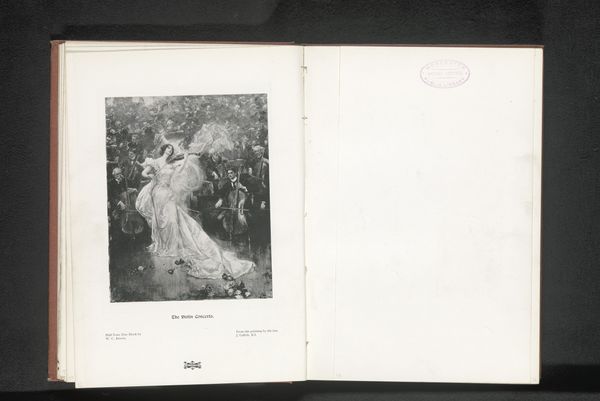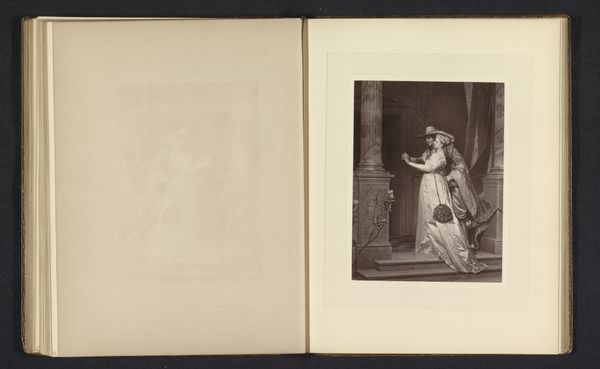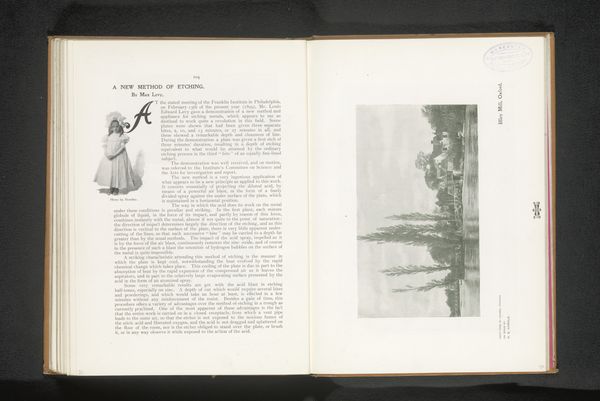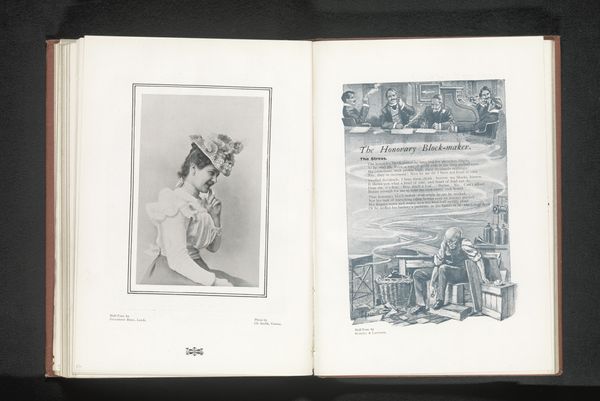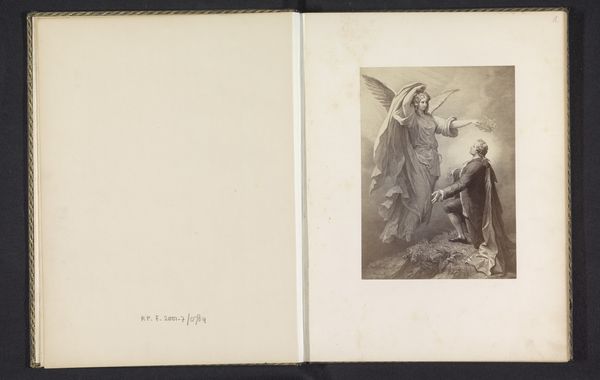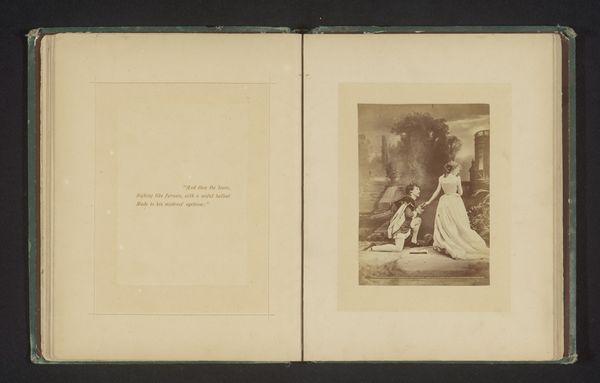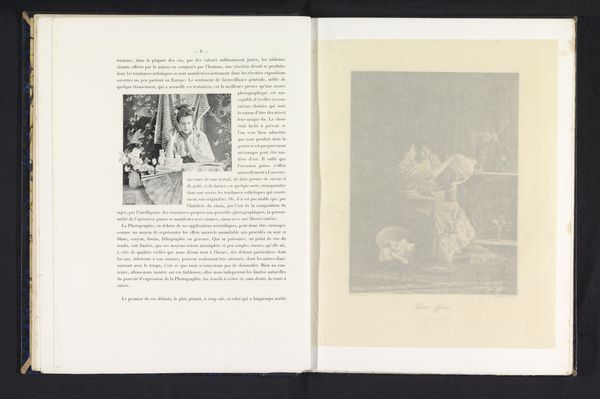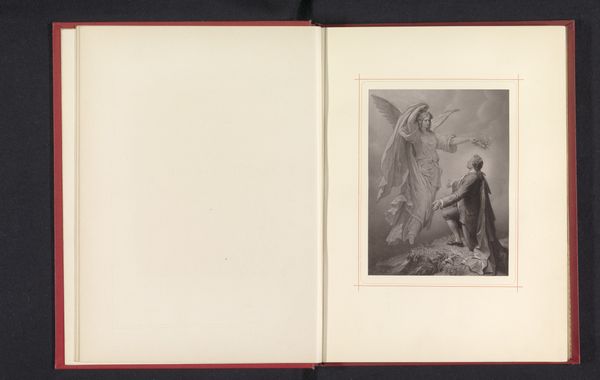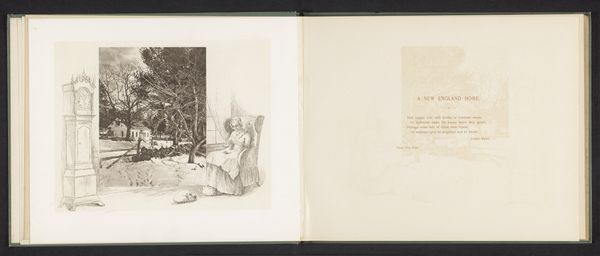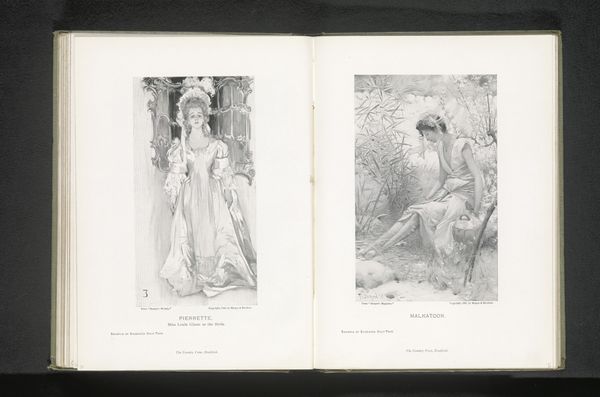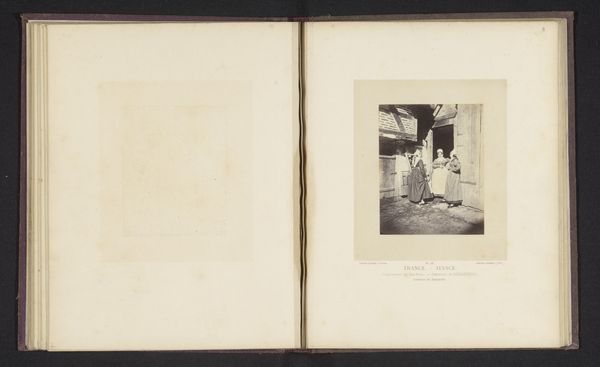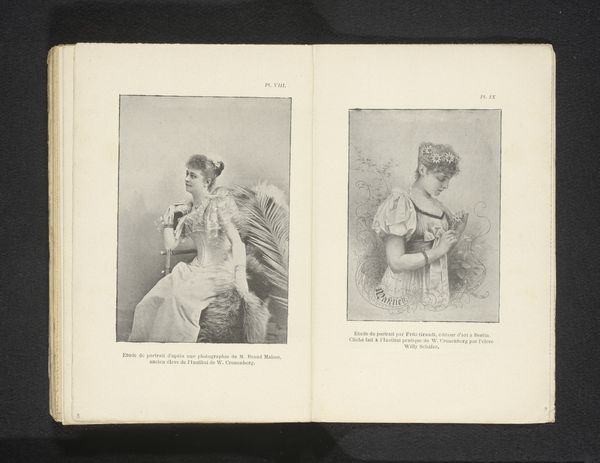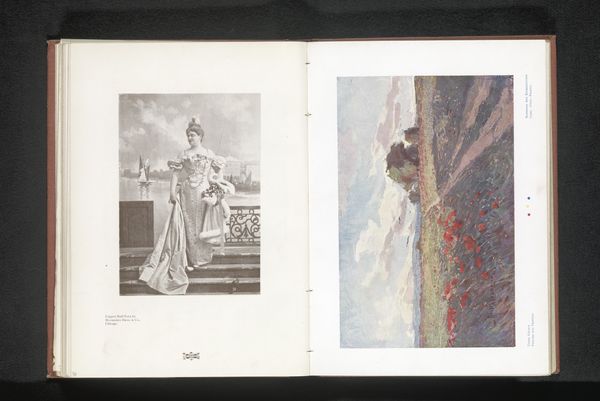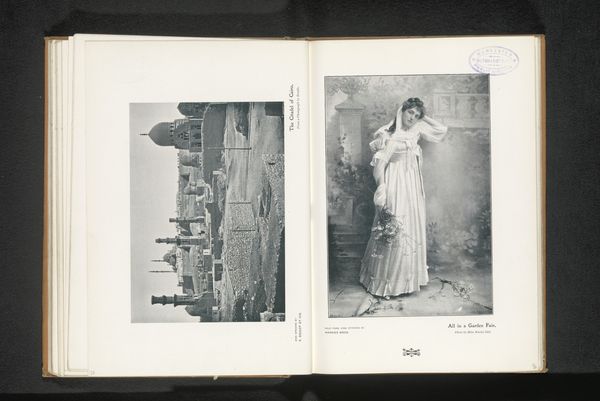
Reproductie van een schilderij van een berglandschap met schapen en brug door Robert Russ before 1899
0:00
0:00
print, etching, photography, albumen-print
#
portrait
# print
#
etching
#
landscape
#
photography
#
albumen-print
Dimensions: height 134 mm, width 101 mm
Copyright: Rijks Museum: Open Domain
Curator: My first impression is that the mountainscape feels a little oppressive. There is so much activity within the grey tones. Editor: Indeed. Here we see an albumen print, "Reproductie van een schilderij van een berglandschap met schapen en brug door Robert Russ." We can estimate its creation to be before 1899. I'd be interested in the artist's perspective and relationship with nature if he reproduced the art this way. Curator: Note how the tonal range moves our eyes across the scene. The dark foreground crowded with figures slowly lifts us towards the bridge. I wonder if that pull is intentionally misleading because there is a visual obstruction on the top left side. Editor: I appreciate that observation! It reflects a shift in 19th-century art toward documenting everyday life but also reveals class dynamics at play. This depiction could reflect Romantic ideals with undercurrents of the Industrial Revolution and those displaced. The composition is structured around movement with the bridge acting almost as a horizon. Curator: Absolutely. It seems to reinforce a perspective or pathway, an intentional focal point constructed amidst an image full of details that lead everywhere and nowhere all at once. Semiotically, that juxtaposition suggests both possibility and constraint. What stories can the subjects and viewers infer and develop with each other. Editor: A crucial element of discussing prints is also to understand its impact within that socio-political and historical moment in how such an image was reproduced, circulated, and consumed. And it really compels a look into who decides and discerns which scenes and symbols are shared. Curator: I agree. From a formal standpoint, that level of distribution shapes interpretation and meaning for later generations. Editor: It all informs our modern analysis. Thank you for your formal and measured considerations. Curator: And thank you for highlighting the art's placement within culture. A fruitful exchange, wouldn't you say?
Comments
No comments
Be the first to comment and join the conversation on the ultimate creative platform.
